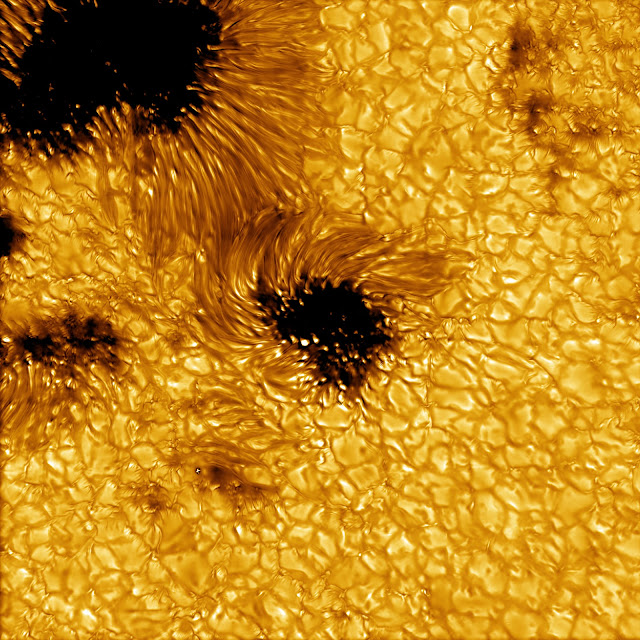The Little Dumbbell Nebula (M76) | Hubble
In celebration of the 34th anniversary of the launch of the legendary NASA/European Space Agency Hubble Space Telescope, astronomers took a snapshot of the Little Dumbbell Nebula (also known as Messier 76, M76, or NGC 650/651) located 3,400 light-years away in the northern circumpolar constellation Perseus. The photogenic nebula is a favorite target of amateur astronomers.
M76 is classified as a planetary nebula. This is a misnomer because it is unrelated to planets. But its round shape suggested it was a planet to astronomers who first viewed it through low-power telescopes. In reality, a planetary nebula is an expanding shell of glowing gases that were ejected from a dying red giant star. The star eventually collapses to an ultra-dense, hot white dwarf.
M76 is composed of a ring, seen edge-on as the central bar structure, and two lobes on either opening of the ring. Before the star burned out, it ejected the ring of gas and dust. The ring was probably sculpted by the effects of the star that once had a binary companion star. This sloughed-off material created a thick disc of dust and gas along the plane of the companion’s orbit. The hypothetical companion star is not seen in the Hubble image, and so it could have been later swallowed by the central star. The disc would be forensic evidence for that stellar cannibalism.
The primary star is collapsing to form a white dwarf. It is one of the hottest stellar remnants known at a scorching 120,000 degrees Celsius, 24 times our Sun’s surface temperature. The sizzling white dwarf can be seen as a pinpoint in the center of the nebula. A star visible in projection beneath it is not part of the nebula.
Pinched off by the disc, two lobes of hot gas are escaping from the top and bottom of the ‘belt’ along the star’s rotation axis that is perpendicular to the disc. They are being propelled by the hurricane-like outflow of material from the dying star, tearing across space at two million miles per hour. This is fast enough to travel from Earth to the Moon in a little over seven minutes! This torrential ‘stellar wind’ is ploughing into cooler, slower-moving gas that was ejected at an earlier stage in the star’s life, when it was a red giant. Ferocious ultraviolet radiation from the super-hot star is causing the gases to glow. The red color is from nitrogen, and blue is from oxygen.
The entire nebula is a flash in the pan by cosmological timekeeping. It will vanish in about 15,000 years.
Image Description: A Hubble image of the Little Dumbbell Nebula. The name comes from its shape. It is a two-lobed structure of colorful, mottled glowing gases that resemble a balloon that has been pinched around a middle waist. Like an inflating balloon, the lobes are expanding into space from a dying star seen as a white dot in the center Blistering ultraviolet radiation from the super-hot star is causing the gases to glow. The red color is from nitrogen, and blue is from oxygen.
Credit: NASA, ESA, STScI, A. Pagan (STScI)
Release Date: April 23, 2024
#NASA #ESA #Astronomy #Space #Science #Hubble #Nebula #M76 #Messier76 #DumbbellNebula #Star #WhiteDwarf #Perseus #Constellation #MilkyWayGalaxy #Cosmos #Universe #SpaceTelescope #HST #STScI #GSFC #UnitedStates #Europe #STEM #Education
.jpg)






